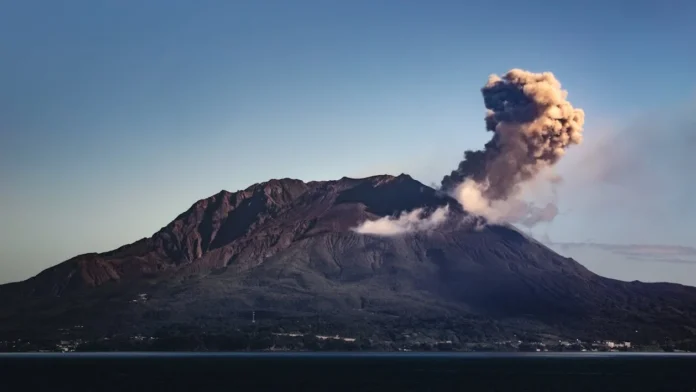Introduction to Volcanoes: Exploring the Basics
Volcanoes, one of Earth’s most awe-inspiring natural phenomena, captivate and terrify in equal measure. These geological formations are openings in the planet’s crust that allow molten rock, ash, and gases to escape from below the surface. The study of volcanoes, known as volcanology, is essential for understanding the dynamic processes that shape our planet. This blog post aims to delve into the world of volcanoes, exploring their types, historic eruptions, hazards, and the intriguing intersection of ecotourism and volcanic landscapes.
Types of Volcanoes and How They Form
Volcanoes come in various shapes and sizes, each formed by specific geological processes. The four primary types of volcanoes are:
1. Shield Volcanoes
Characterized by broad, gentle slopes, shield volcanoes are built up by the flow of low-viscosity lava that travels long distances. Mauna Loa in Hawaii is a prime example of a shield volcano.
2. Stratovolcanoes (Composite Volcanoes)
Stratovolcanoes have steep, conical shapes and are composed of multiple layers of hardened lava, tephra, and volcanic ash. These volcanoes are known for their explosive eruptions. Mount Fuji in Japan and Mount St. Helens in the United States are iconic stratovolcanoes.
3. Cinder Cone Volcanoes
Cinder cone volcanoes are the smallest type, typically consisting of a single vent surrounded by a steep, conical hill of volcanic debris. Paricutin in Mexico is a well-known cinder cone volcano that emerged from a cornfield in 1943.
4. Lava Domes
Lava domes form from the slow extrusion of viscous lava, resulting in a rounded, dome-shaped structure. These volcanoes can grow within the craters of larger volcanoes. Mount St. Helens has a prominent lava dome that formed after its 1980 eruption.
Historic Eruptions and Their Global Impact
Throughout history, volcanic eruptions have had profound effects on human civilizations and the environment. Some notable historic eruptions include:
1. Mount Vesuvius (79 AD)
The eruption of Mount Vesuvius in 79 AD buried the Roman cities of Pompeii and Herculaneum under layers of ash and pumice. This catastrophic event preserved the cities, providing a unique archaeological window into ancient Roman life.
2. Krakatoa (1883)
The 1883 eruption of Krakatoa in Indonesia was one of the most violent in recorded history. The explosion generated massive tsunamis, killed over 36,000 people, and caused global temperatures to drop due to the volcanic ash entering the atmosphere.
3. Mount St. Helens (1980)
The eruption of Mount St. Helens in Washington state on May 18, 1980, was the most economically destructive volcanic event in U.S. history. The explosion reduced the mountain’s height by over 1,300 feet and devastated surrounding forests and infrastructure.
Living with Volcanoes: Volcanic Hazards and Preparedness
Living near a volcano comes with inherent risks, including lava flows, ash fall, pyroclastic flows, and volcanic gases. Understanding these hazards and implementing preparedness measures are crucial for communities in volcanic regions.
1. Lava Flows
Lava flows can destroy everything in their path but move slowly enough to allow for evacuation. Building barriers and diverting flows can help mitigate damage.
2. Ash Fall
Volcanic ash can cause respiratory issues, contaminate water supplies, and damage machinery and buildings. Wearing masks and securing ventilation systems can reduce health risks.
3. Pyroclastic Flows
These fast-moving currents of hot gas and volcanic matter are highly destructive and can reach temperatures of up to 1,800°F. Evacuation is the only effective safety measure against pyroclastic flows.
4. Volcanic Gases
Gases such as sulfur dioxide and carbon dioxide can be hazardous to health and the environment. Monitoring air quality and using gas masks can protect against these dangers.
Volcanic Monitoring and Prediction Technologies
Advancements in technology have significantly improved our ability to monitor and predict volcanic activity. Key methods include:
1. Seismology
Seismometers detect volcanic tremors and earthquakes, providing early warning signs of potential eruptions.
2. Remote Sensing
Satellites and drones monitor volcanic landscapes, capturing thermal images, gas emissions, and surface changes.
3. Ground Deformation
GPS and InSAR (Interferometric Synthetic Aperture Radar) track ground movements, indicating magma movement beneath the surface.
4. Gas Emissions
Instruments measure volcanic gases, helping to identify changes in volcanic activity and forecast potential eruptions.
Ecotourism and Volcanoes: Exploring the Benefits and Challenges
Volcanoes attract millions of visitors each year, offering unique opportunities for ecotourism. However, balancing tourism with conservation and safety is vital.
Benefits of Volcanic Ecotourism
- Economic Growth: Tourism generates income for local communities and promotes infrastructure development.
- Education and Awareness: Visitors learn about volcanic processes and the importance of environmental conservation.
- Scientific Research: Increased interest in volcanic regions can lead to funding for scientific studies.
Challenges of Volcanic Ecotourism
- Environmental Impact: Increased foot traffic can damage delicate volcanic ecosystems.
- Safety Concerns: Managing the risks associated with active volcanoes is essential for protecting tourists and locals.
- Sustainable Practices: Implementing eco-friendly tourism practices ensures the long-term preservation of volcanic landscapes.
Conclusion: Emphasizing the Power and Beauty of Volcanoes
Volcanoes are extraordinary natural wonders that highlight the dynamic forces shaping our planet. From understanding their formation and impact to managing the risks and opportunities they present, volcanoes offer a profound connection to the Earth’s inner workings. As we continue to advance our knowledge and technology, we can better appreciate, respect, and coexist with these powerful giants.
By exploring the world of volcanoes, we gain a deeper appreciation for their role in our planet’s history and future. Whether it’s through scientific research, ecotourism, or disaster preparedness, our engagement with volcanoes exemplifies the delicate balance between harnessing nature’s power and respecting its unpredictable beauty.

